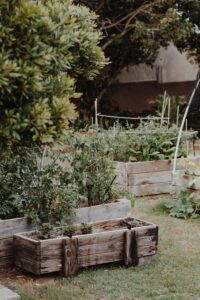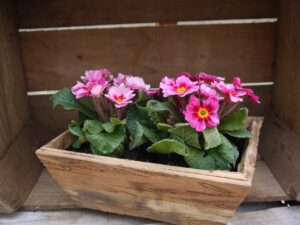Are you interested in adding some greenery to your outdoor space? Look no further than planter boxes! Whether you have a spacious garden or a small balcony, planter boxes are a fantastic way to bring life and color to any area. However, finding the right ones for your planter boxes can be daunting with so many plant options. But fret not! In this article, we’ll guide you through selecting the perfect plants for your planter boxes, ensuring your outdoor oasis flourishes with beauty and charm. The ideal addition to any outdoor space, planter boxes offer a versatile and customizable way to bring nature right to your doorstep. Whether you have a small balcony or a spacious garden, there are a few key factors to consider when selecting the right plants for your planter boxes. In this comprehensive guide, we’ll walk you through each step of the decision-making process, ensuring you create a stunning and thriving display that suits your unique needs.
Consider Your Location
Evaluate Your Climate
Before selecting plants, it’s important to assess your location’s climate. Different plants thrive in different climates, so understanding your area’s temperature ranges, rainfall patterns, and average humidity levels is crucial. This will help you determine which plants will most likely succeed in your planter boxes.
Assess the Sunlight
Sunlight is a vital factor when selecting plants. Some plants prefer full sun, while others thrive in partial shade or shade. Take note of the amount of sunlight that your planter boxes receive throughout the day. This will help you choose plants suitable for your available light conditions.
Check for Wind Exposure
Wind exposure can significantly impact the health and growth of your plants. Some plants may not be able to withstand intense and constant winds, so it’s essential to consider the wind patterns in your location. If your planter boxes are in a windy area, selecting wind-resistant plants will be necessary for survival.
Determine Available Space
Measure the Planter Box Dimensions
Knowing the dimensions of your planter boxes is vital when selecting plants. Take accurate measurements of your planters’ length, width, and depth. This information will help you choose plants that fit properly within your boxes and allow for adequate root growth.
Consider Height Restrictions
If your planter boxes are located in a space with height restrictions, such as a balcony or a low-ceilinged patio, it’s essential to select plants that will not exceed these limitations. Opting for more compact or trailing varieties can ensure that your plants will not outgrow their designated space.
Think About the Surrounding Space
Consider the overall space surrounding your planter boxes. Note any nearby structures, furniture, or obstructions that could impact the growth of your plants. If your planter boxes are near walls or fences, choose plants that won’t overcrowd or damage these structures as they mature.
Identify Planting Conditions
Determine Soil Type
The soil type in your planter boxes significantly affects the success of your plants. Different plants have varying soil preferences, such as well-draining, loamy, or soil with a specific pH level. Understanding your soil composition will help you select plants that thrive in the conditions provided.
Check Drainage
Proper drainage is essential for the health of your plants. Excess moisture can lead to root rot and other issues, so ensure your planter boxes have adequate drainage holes or gravel at the bottom. Consider plants more tolerant of moist conditions if your planter boxes have poor drainage.
Consider Watering Requirements
Different plants have different watering needs. Some plants prefer consistently moist soil, while others thrive in drier conditions. Assess your watering capabilities and lifestyle to determine which plants will be most suitable for your planter boxes. Keep in mind that plants in containers generally require more frequent watering compared to those in the ground.
Choose Plants for Aesthetic Appeal
Consider Colors and Textures
Selecting plants with complementary colors and textures will create a visually appealing display in your planter boxes. Play with contrasting hues and leaf shapes to add interest and depth to your arrangement. Consider how these colors and textures complement the surrounding landscape or outdoor decor.
Select Plants with Complementary Forms
In addition to colors and textures, consider the forms of the plants you choose. Varying heights, growth habits, and shapes can add visual interest and create a harmonious composition. Combine upright, spreading, and trailing plants to create a dynamic and balanced arrangement.
Think About the Overall Style
Consider the overall style and theme you want to achieve with your planter boxes. Do you prefer a contemporary, minimalist look or a lush, tropical oasis? The style of your planter boxes should align with your taste and the existing aesthetic of your outdoor space.
Consider the Purpose of the Planter Box
Decorative or Focal Point
If your planter boxes are primarily for decorative purposes, focus on selecting visually stunning and eye-catching plants. Choose blooms with vibrant colors or unique foliage patterns to create a statement piece in your outdoor space. Opt for plants that have an extended bloom period to ensure continuous visual appeal.
Grow Herbs or Vegetables
Planter boxes can be a practical way to grow your herbs or vegetables. Select plants well-suited for container gardening, such as compact varieties or ones bred explicitly for small spaces. Consider the culinary possibilities and choose herbs or vegetables that you frequently use in your cooking.
Create a Privacy Screen
If privacy is a concern, planter boxes can create a natural barrier or screen. Select taller plants that provide dense foliage and grow relatively quickly. Consider evergreen varieties that maintain foliage year-round for maximum privacy and a lush green screen.
Select Plants Based on Maintenance Level
Low-Maintenance Options
If you’re looking for hassle-free gardening, opt for low-maintenance plants. These plants require minimal pruning, deadheading, or fertilizing. Drought-tolerant varieties can also reduce watering needs. Look for native plants or succulents, often requiring less care and attention.
Medium-Maintenance Options
Medium-maintenance plants may require occasional pruning or deadheading to maintain their appearance. They may also have specific soil or watering requirements. These plants still offer visual appeal and can be rewarding for gardeners willing to invest more time and effort.
High-Maintenance Options
High-maintenance options can provide a fulfilling challenge for the dedicated gardener who loves to spend time nurturing their plants. These plants often require frequent watering, regular fertilizing, and precise pruning. Please exercise caution when choosing high-maintenance plants, as they can be demanding and require more knowledge and resources.
Research Plant Compatibility
Consider Plant Height and Spreading
When selecting various plants for your planter boxes, consider their growth habits and potential sizes. Choose plants that won’t overcrowd or shade out each other as they mature. Pair tall plants with shorter ones to create visual interest and layers of foliage.
Check Soil pH Requirements.
Different plants have varying soil pH requirements for optimal growth. Some prefer acidic soil, while others thrive in alkaline or neutral soil. Consider the collective pH preferences of your chosen plants to ensure compatibility and avoid potential nutrient deficiencies or toxicities.
Account for Plant Toxicity
Being mindful of any potential plant toxicity is essential if you have pets or young children. Some plants can be harmful or even fatal if ingested. Research the toxicity levels of your chosen plants and ensure they are safe for your specific circumstances.
Evaluate Growth Patterns
Determinate vs. Indeterminate Growth
Plants can have either determinate or indeterminate growth patterns. Determinate plants have a predetermined size and tend to stop growing after reaching maturity. Indeterminate plants continue to grow and produce as long as they receive favorable conditions. Consider the space available and select plants with growth patterns that align with your desired dimensions.
Growth Habit (Upright, Spreading, Trailing, etc.)
Consider the growth habit of the plants you choose. Upright plants provide vertical interest while spreading or trailing plants can soften the edges of your planter boxes. Combine different growth habits to create a visually dynamic display and maximize the use of space in your planters.
Consider Potential Size at Maturity
Research their potential size at maturity before selecting plants for your planter boxes. Ensure that they won’t outgrow the available space or hinder the growth of other plants. Plan accordingly to avoid overcrowding and the need for excessive pruning in the future.
Consider Seasonal Variations
Choose Plants for Year-Round Interest
Select plants that offer year-round interest to create a visually pleasing display throughout the year. Evergreen plants provide structure and color even in the winter, while deciduous plants offer beautiful foliage changes throughout the seasons. Combine different flowering times and foliage characteristics to ensure continuous visual appeal.
Consider Seasonal Blooms
Choose plants that bloom during different seasons to add pops of color and excitement to your planter boxes throughout the year. Include early spring flowers, summer blooms, and fall foliage for a vibrant and ever-changing display. Research the blooming periods of your chosen plants and plan accordingly.
Account for Winter Hardiness
If you live in an area with cold winters, consider the winter hardiness of your selected plants. Ensure they can withstand the harsh conditions and survive the frost and freezing temperatures. Opt for frost-tolerant or winter-hardy varieties to maintain a visually appealing display even during the colder months.
Think About Pollinators and Wildlife
Attracting Bees and Butterflies
To encourage pollinators like bees and butterflies to visit your outdoor space, select plants that attract these essential creatures. Choose nectar-rich blooms and plants with specific floral shapes that attract them. Creating a pollinator-friendly environment benefits the ecosystem and adds liveliness and beauty to your planter boxes.
Creating Habitat for Birds or Insects
If you enjoy bird watching or want to support local wildlife populations, select plants that provide habitat and food sources for birds or insects. Incorporating plants with berries, seeds, or nectar can attract various birds or beneficial insects to your planter boxes—research which plants are known to attract specific species in your region.
Selecting Plants that Provide Food Sources
Consider adding plants that provide bird food sources, such as berry-producing shrubs or fruit trees. These plants can offer a sustainable and natural food supply for local bird populations. Research the specific dietary preferences of your target bird species and select plants accordingly.
Following these comprehensive steps, you can select the right plants for your planter boxes. Remember to consider your location, available space, planting conditions, and the purpose of your planter box. Think about the aesthetic appeal, maintenance level, and plant compatibility. Evaluate growth patterns, seasonal variations, and the needs of pollinators and wildlife. With careful consideration and planning, you can create stunning planter boxes that bring life and beauty to your outdoor space. Happy gardening!



